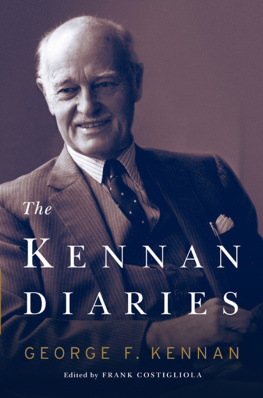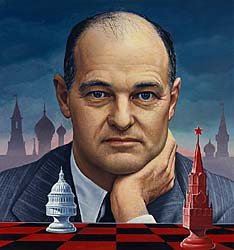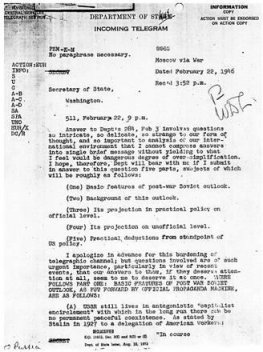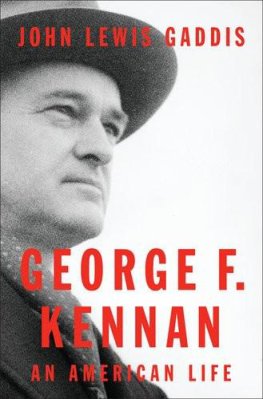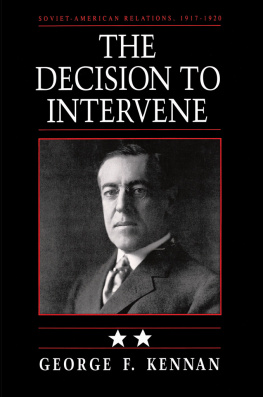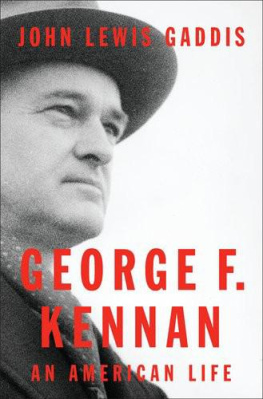George F. Kennan - The Kennan Diaries
Here you can read online George F. Kennan - The Kennan Diaries full text of the book (entire story) in english for free. Download pdf and epub, get meaning, cover and reviews about this ebook. year: 2014, publisher: W. W. Norton & Company, genre: Detective and thriller. Description of the work, (preface) as well as reviews are available. Best literature library LitArk.com created for fans of good reading and offers a wide selection of genres:
Romance novel
Science fiction
Adventure
Detective
Science
History
Home and family
Prose
Art
Politics
Computer
Non-fiction
Religion
Business
Children
Humor
Choose a favorite category and find really read worthwhile books. Enjoy immersion in the world of imagination, feel the emotions of the characters or learn something new for yourself, make an fascinating discovery.
- Book:The Kennan Diaries
- Author:
- Publisher:W. W. Norton & Company
- Genre:
- Year:2014
- Rating:3 / 5
- Favourites:Add to favourites
- Your mark:
The Kennan Diaries: summary, description and annotation
We offer to read an annotation, description, summary or preface (depends on what the author of the book "The Kennan Diaries" wrote himself). If you haven't found the necessary information about the book — write in the comments, we will try to find it.
A landmark collection, spanning ninety years of U.S. history, of the never-before-published diaries of George F. Kennan, Americas most famous diplomat.
On a hot July afternoon in 1953, George F. Kennan descended the steps of the State Department building as a newly retired man. His career had been tumultuous: early postings in eastern Europe followed by Berlin in 194041 and Moscow in the last year of World War II. In 1946, the forty-two-year-old Kennan authored the Long Telegram, a 5,500-word indictment of the Kremlin that became mandatory reading in Washington. A year later, in an article in Foreign Affairs, he outlined containment, Americas guiding strategy in the Cold War. Yet what should have been the pinnacle of his careeran ambassadorship in Moscow in 1952was sabotaged by Kennan himself, deeply frustrated at his failure to ease the Cold War that he had helped launch.Yet, if it wasnt the pinnacle, neither was it the capstone; over the next fifty years, Kennan would become the most respected foreign policy thinker of the twentieth century, giving influential lectures, advising presidents, and authoring twenty books, winning two Pulitzer prizes and two National Book awards in the process.
Through it all, Kennan kept a diary. Spanning a staggering eighty-eight years and totaling over 8,000 pages, his journals brim with keen political and moral insights, philosophical ruminations, poetry, and vivid descriptions. In these pages, we see Kennan rambling through 1920s Europe as a college student, despairing for capitalism in the midst of the Depression, agonizing over the dilemmas of sex and marriage, becoming enchanted and then horrified by Soviet Russia, and developing into Americas foremost Soviet analyst. But it is the second half of this near-century-long recordthe blossoming of Kennan the gifted author, wise counselor, and biting critic of the Vietnam and Iraq warsthat showcases this remarkable man at the height of his singular analytic and expressive powers, before giving way, heartbreakingly, to some of his most human moments, as his energy, memory, and finally his ability to write fade away.
Masterfully selected and annotated by historian Frank Costigliola, the result is a landmark work of profound intellectual and emotional power. These diaries tell the complete narrative of Kennans life in his own intimate and unflinching words and, through him, the arc of world events in the twentieth century.
16 pages of photographsGeorge F. Kennan: author's other books
Who wrote The Kennan Diaries? Find out the surname, the name of the author of the book and a list of all author's works by series.

